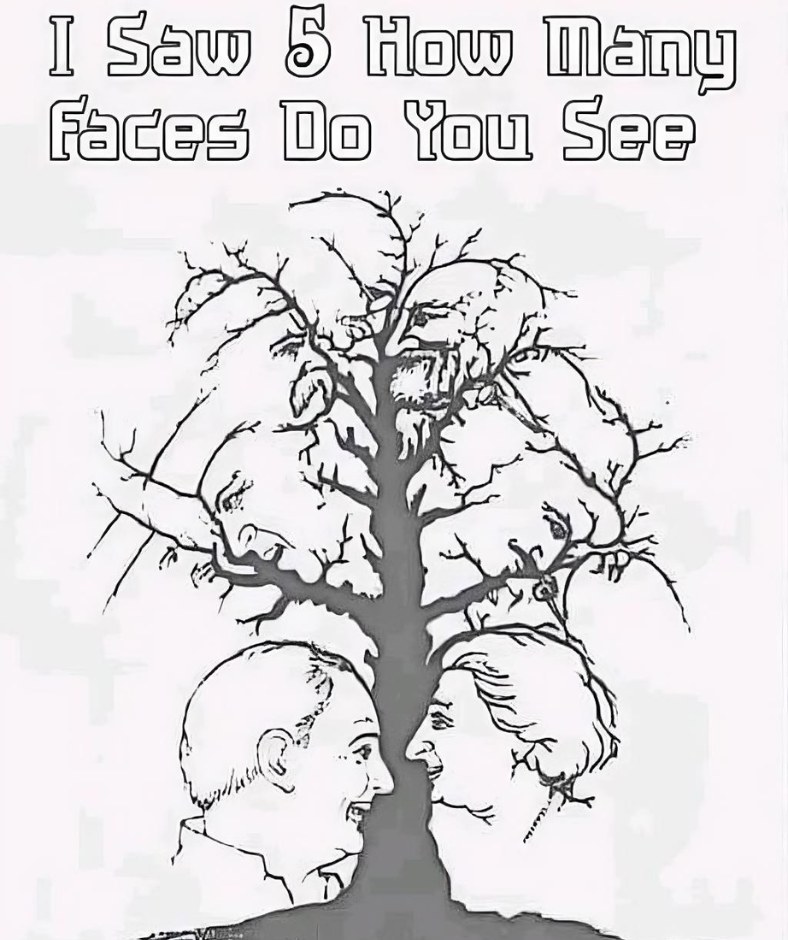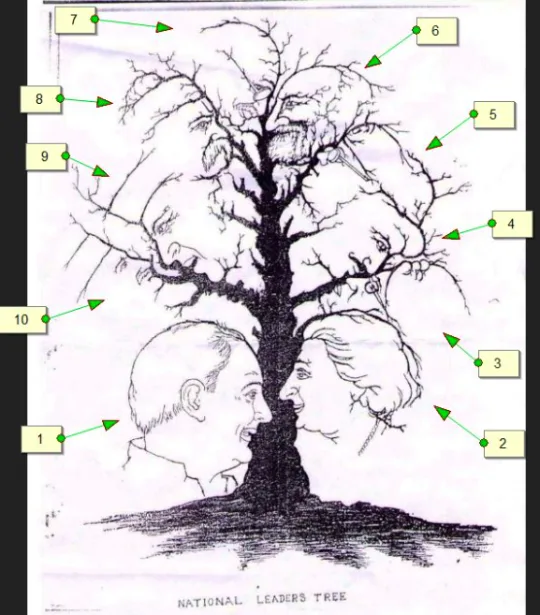
A Puzzle With Mysterious Origins
This mind-bending illusion dates back to the late 19th century, with some sources claiming it first appeared in Harper’s Illustrated magazine in the 1880s. At first glance, the image seems to depict a simple tree in silhouette. However, a closer look reveals at least ten—possibly even eleven—faces of former world leaders hidden within its foliage.
Over the years, debates have surrounded the identities of these hidden figures. Some believe former British Prime Minister Margaret Thatcher and ex-Soviet leader Mikhail Gorbachev are among them. Others argue the faces belong to notable Indian political figures, adding an extra layer of intrigue to this already fascinating puzzle.
Why Is the “Tree of Faces” So Captivating?
What is it about this illusion that has captivated audiences for more than a century? The answer lies in its ability to challenge perception. It forces us to go beyond what we initially see and discover hidden patterns within the familiar. This process taps into our natural curiosity, engaging our brains in a way that strengthens critical thinking and problem-solving skills.
Optical illusions like this one aren’t just entertaining—they provide valuable insights into human cognition. They reveal how our eyes and brains work together, sometimes tricking us into seeing things that aren’t immediately obvious. By studying illusions, scientists can better understand how perception and cognitive processes function.

A Timeless Challenge in a Digital World
Despite today’s rapid advancements in technology and instant-access entertainment, the resurgence of the “Tree of Faces” proves that classic puzzles still have the power to fascinate us. It reminds us that, no matter how much the world changes, the human mind remains drawn to the mysterious, the unexpected, and the thrill of uncovering hidden details.
Whether you’re a dedicated puzzle enthusiast or just someone who enjoys a good visual challenge, this centuries-old illusion is sure to intrigue and entertain. Take a close look—can you spot all ten (or eleven) hidden faces within the branches? If you can do it in under ten seconds, you just might be among the top 1%!





